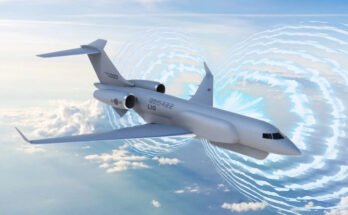by Dan Darling, International Military Markets Analyst, Forecast International.
More than nine years after India initially sought out a Medium Multi-Role Combat Aircraft (MMRCA) under its $11 billion “Deal of the Century” competition, over four years since the Rafale was downselected as the winning bid, and nearly a year-and-a-half since Prime Minister Narendra Modi cut through the byzantine MMRCA technical parameters in an attempt to speed things up by reaching an inter-government agreement with French President Francois Hollande, India finally signed a deal with France for the procurement of Dassault Rafale combat aircraft on September 23.
The EUR7.87 billion ($8.83 billion) deal involves 36 new fighters delivered in fly-away condition, plus Meteor beyond-visual-range air-to-air missiles (BVRAAMs) and Scalp long-range standoff cruise missiles to arm them. It also provides India with a 50 percent offset clause that will help Indian industry through EUR3 billion worth of investment (20 percent of this will go toward local production of Rafale components).
There is also an option clause under which India may procure an additional 18 fighters at the same price.
Delivery of the new jets will begin by September 2019 and be wrapped up by March 2021, or 66 months from the date of contract signing. Once the full complement of 36 jets arrives, the Indian Air Force will form two Rafale squadrons. The Rafales will provide the IAF with a more advanced, capable combat aircraft than currently fielded by its neighboring rivals, China and Pakistan.
But in the end, despite sighs of relief from corners of the Indian defense establishment, there remains a vacuum in combat aircraft capacity. The original MMRCA competition was for 126 fighters, only 18 of which were to be provided from France in fly-away condition. With the IAF fleet of aging MiG-21bis “Bisons” slated for retirement in the coming years, the service’s requirement to field 42 operational fighter squadrons by 2022 (and 45 by 2032) will shrink further, as the two Rafale squadrons will not compensate numerically for those being withdrawn.
While the Modi government continues to tout future additions of the indigenous Light Combat Aircraft (LCA), or “Tejas,” of which 120 are being ordered, that aircraft fills only the low end of the fighter spectrum. Another project – under which India intends to revisit a “Make in India” fighter acquisition whereby a foreign platform is selected and the manufacturer sets up production in India – still has yet to be defined. Though U.S. companies Boeing and Lockheed Martin have offered up their F/A-18 Super Hornet and F-16 Super Viper, respectively, and Sweden has aggressively promoted the Gripen, this project remains in the planning stages despite the urgency given it by Modi and Defence Minister Manohar Parrikar.
However, help could be on the way in the form of a joint Russo-Indian Fifth-Generation Fighter Aircraft (FGFA). Like the Rafale procurement, this project finally appears to be coming together after years of back-and-forth negotiations with Moscow.
But until that agreement is inked and a second production line set up inside the country for a Make in India fighter, the same scenario holds: an Indian Air Force with limited operational capacity beset with varying fighter platforms, each with dubious serviceability ratios.
Please feel free to use this content with Forecast International and analyst attributions, along with a link to the article. Contact Ray Peterson at +1 (203) 426-0800 or via email at ray.peterson@forecast1.com for additional analysis.
The Forecast International International Military Markets series examines the military capabilities, equipment requirements, and force structures inventories of 140 countries, with corresponding coverage of the political and economic trends shaping the defense market outlook for individual countries and regions.
For 50 years, Forecast International intelligence reports have been the aerospace and defense industry standard for accurate research, analysis, and projections. Our experienced analysts compile, evaluate, and present accurate data for decision makers. FI's market research reports offer concise analysis of individual programs and identify market opportunities. Each report includes a program overview, detailed statistics, recent developments and a competitive analysis, culminating in production forecasts spanning 10 or 15 years. Let our market intelligence reports be a key part of reducing uncertainties and mastering your specific market and its growth potential. Find out more at www.forecastinternational.com



